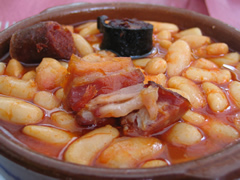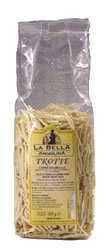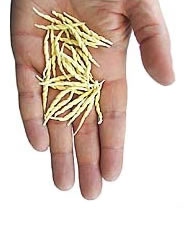www.chechurubiera.info - an online magazine for fans of Chechu Rubiera
FOOD . DRINK
FRUITS OF ENCOUNTER
CHECHU'S APPLE JAM
Nicky writes, When we visited Chechu in Asturias last month, he gave us a gift. Two little pots of apple jam, which he'd made earlier. No, we're not giving them away as a prize, Chechu's jam is all gone. Delicious with porridge, or toast, or ham.
But with Christmas in mind, and because everybody loves a personal gift, we've been peeling, chopping and boiling, and we think we're pretty close to Chechu's recipe.
By the way, we've checked recipes. Although the taste might be similar, this isn't like apple cheese, or apple butter. It's jam!
Ingredients : 1kg cooking apples, 1kg sugar, 100ml lemon juice, 1tsp cinnamon.
Method : Peel apples, slice thinly. Put everything in large pan, bring to boil, turn down heat and let it bubble away for 30 minutes (or until apples are transparent).
How easy is that! Enjoy, and don't forget to label your jars. Chechu's jam.
FABADA: ASTURIAN HOME COOKING
Last November, The Paceline interviewed Chechu. The first question was "What's your favourite food and why?" It brought a tasty reply:
My favorite food is fabada. It's a typical dish from Asturias, the place where I live, and it's made with beans and pretty fattening. This is why I probably like it so much. It's for sure not good for cyclists!
Spanish speciality food suppliers, La Tienda tell us,
"Fabada Asturiana is the renowned bean stew that has made Asturian cuisine famous. Premium granja Fabada beans grown in Asturias make up the base for this fortifying dish. These are the exquisite granja variety fabada beans that are harvested exclusively by farmers in rural Asturias and sent to neighboring Astorga in Leon for packaging. Although the granja beans cost more than other varieties of fabada beans grown elsewhere in Spain, we chose to import this particular strain because local chefs insist that these are the finest beans to use when your goal is truly authentic fabada stew.
An apocryphal story tells of the conquering Moors in the eighth century arriving in Asturias and feasting on fabada provided by their Christian hosts. By late afternoon, so the story goes, they were so sated that the Christians regained control of Asturias with little resistance."
Chef’s Note: A word about “authentic”. Fabada is a traditional dish cooked in many Asturian homes. There are probably as many versions of fabada as there are cooks. Some use Serrano ham, some include peppers or smoked paprika. Some cook the beans for hours and hours, some call for use of the terracotta pot, the cazuela.
As a newcomer to fabada, I first created the easy version, an adaptation published with Chechu’s interview in The Paceline. Most ingredients were accessible to a cook outside of Spain, but I didn’t have morcilla sausage, and the chorizo available here in the USA was Mexican. This produced a slightly different soup. Nonetheless, it was delicious, so I plucked up my courage and ordered the ingredients to make a more authentic Asturian fabada. I was pleased that it was not expensive to do this, and LaTienda.com offered great service online. The morcilla con cebolla (with onions) and hot Spanish chorizo by Palacios were wonderful discoveries, however, I did not include Serrano ham. I did purchase a cazuela and enjoyed using it.
My advice for chefs is don’t hesitate to get the true Spanish ingredients, and try cooking fabada soon. I made some during the Vuelta a Castilla y León, and you know what a great race that was for Chechu!
 Fabada
Fabada
serves 8-10 (recipe by La Tienda)
1 pound beans, dry; 10 cups water; 1 onion, diced; 4 cloves garlic, minced; 8 oz Serrano ham, chopped; 8 oz chorizo sausage, chunked; 6 oz morcilla sausage, chunked; 2 tbsp Spanish olive oil; 1 tsp pimentón smoked paprika; 1 pinch of Saffron.
INSTRUCTIONS
Soak the beans for 8 hours in cold water. Drain. Add beans and water to a large cazuela dish. Bring to a boil and skim the foam. Add the saffron and paprika.
Cook on a low boil for 2 to 3 hours. While the beans cook, add the olive oil to a heavy skillet. Add the onion, garlic, ham, chorizo and morcilla. Brown for a few minutes. Reserve. When the beans are ready, remove 1 cup of cooked beans. Mash the cup of beans and stir into the pot. Add the onion and meat mixture.
Simmer for 40 minutes. Add salt to taste. Take off heat and let sit for 30 minutes to allow the juice to thicken.
To enjoy an Asturian meal, accompany the fabada with some cornbread such as the Portuguese broa featured below (chapeau, José Azevedo!) and drink a cold glass of sidra—sparkling apple cider—available from LaTienda.com.
Broa: Portuguese Cornbread
Preheat oven to 350º
1½ cups yellow cornmeal; 1½ tsp salt ; 1 cup boiling water; 1 Tbsp plus 1 tsp olive oil; 1 package of active dry yeast; 1 tsp sugar; ¼ cup lukewarm water; 1¾ to 2 cups all-purpose flour
Mix together 1 cup cornmeal, the salt, and boiling water. Stir until smooth. Stir in 1 tbs olive oil. Allow mixture to cool to lukewarm. In a separate small bowl, add the yeast and sugar to the lukewarm water. Let stand for 2 or 3 minutes, then stir to dissolve yeast. Set the bowl in a warm, draft-free place until the yeast has doubled in volume, about 8 to 10 minutes.
Stir the yeast into the cornmeal mixture. Keep stirring and add the rest of the cornmeal and 1 cup flour. Make the dough into a ball, and put it into a large bowl draped with a towel. Put the bowl in a draft-free place until the dough has doubled in bulk, about 30 minutes.
Coat the bottom and sides of a 9-inch pie pan with the remaining olive oil. Turn the dough out on a lightly floured surface, and punch it down. Knead for 5 minutes, adding up to 1 cup flour to make a firm but not stiff dough. Shape it into a flat round loaf and put it in the oiled pie pan. Cover with a towel and let rise until doubled, about 30 minutes.
Bake in the middle of a 350º oven until golden, about 40 minutes. Transfer to a rack to cool.
Spanish specialty food suppliers:
USA: La Tienda;
La Española Meats;
Amigo Foods
UK: Delicioso;
Iberian Foods
go to top
THE WINNER OF THE TROPHY FOR BEST PASTA IS ... TROFIE!

Rebecca Bell writes, It’s the month of May, time for the Giro d’Italia, and springtime besides. Those of us who are unfortunately not in Italy watching the race are, with luck, experiencing sunny warm days with floral breezes at home.
For me, keeping up with the Giro daily online and on TV, my thoughts turn toward Italy in general, and in particular anything I can do to bring Italy into my house. Cooking is an easy way to open the door to Italy!
If you asked Chechu what's his favorite restaurant and why, his answer would be “I'd pick any Italian restaurant for sure. I love lasagna, pizza, pasta...”
Since so many of us agree with him, here’s something simple, fun, and Italian: trofie with pesto.
Trofie are corkscrew-shaped pasta from Liguria in northwestern Italy. Their name is derived from the same root as our English word trophy, and refers to a turning, a rout, or a victory in battle. Therefore, a trophy is a prize that commemorates a victory, such as winning the Giro d’Italia.
As you can see, the Giro trophy is a large stylized version of the pasta shape, and each piece of pasta is a trofeo piccolino.

 Trofie are a firm pasta, often handmade, and without eggs in the recipe. They plump up when cooked, and look even more like the Giro trophy. They maintain a pale color—offering an attractive contrast with sauces—and become quite springy when served.
Trofie are a firm pasta, often handmade, and without eggs in the recipe. They plump up when cooked, and look even more like the Giro trophy. They maintain a pale color—offering an attractive contrast with sauces—and become quite springy when served.
Trofie are eaten with pesto across Liguria, including Genoa where pesto orginated. Liguria has the best pesto in world due to the particular excellence of the basil grown there.
A light meal of trofie and pesto can be prepared in about twenty minutes. Accompany the pasta with a simple salad, fresh fruit and gelato, put your feet up, and turn on the Giro! Afterwards, you’ll have a culinary victory to commemorate, along with the day’s stage winner.
Trofie is an unusual cut of pasta outside of Italy, but it can be purchased in Italian specialty shops, or you can make your own, here's a recipe. There’s a pesto recipe included as a link. Pesto is widely available at grocery stores, but if you’d like to order pesto or pasta, try Chefshop.com or go for the genuine Ligurian items at Liguria Foods.
Buon appetito!
go to top